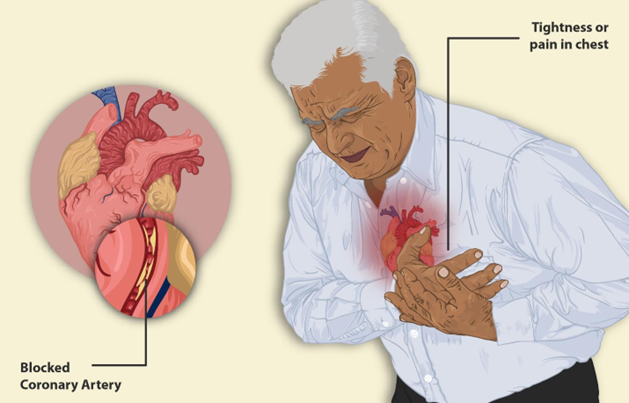The nurse is developing a plan of care for an older client with hypertension who reports chest pain on exertion. Which outcome should the nurse include in the plan of care for this client?

The nurse will call the client weekly to monitor the client's blood pressure and symptoms.
The nurse will encourage the client to walk thirty minutes every day.
The client will take up to 4 nitroglycerine tablets sublingually for chest pain.
The client will record episodes of angina and self-management for one week.
The Correct Answer is D
Choice A rationale:
Weekly monitoring of blood pressure and symptoms is important but does not address the specific issue of chest pain on exertion.
Choice B rationale:
Encouraging daily walking is generally a good recommendation for overall health but does not address the immediate concern of chest pain.
Choice C rationale:
Taking up to 4 nitroglycerine tablets for chest pain may provide temporary relief, but this should be done under the guidance of a healthcare provider and is not a long-term outcome.
Choice D rationale:
Recording episodes of angina and self-management for one week is a specific and appropriate outcome to monitor the client's chest pain and response to interventions.
Nursing Test Bank
Naxlex Comprehensive Predictor Exams
Related Questions
Correct Answer is B
Explanation
Choice A rationale:
A five-pound weight gain in a client taking lithium carbonate is significant. however, the timeframe of the weightgain is to be known.Choice B rationale:
Nausea and vomiting are known side effects of lithium that should be reported as they can cause electrolyte imbalance.
Choice C rationale:
Short-term memory loss is a potential side effect of lithium, but it may not require immediate reporting unless it significantly affects the client's daily functioning or is associated with other concerning symptoms.
Choice D rationale:
A depressed affect is a symptom that should be addressed as part of the client's ongoing psychiatric care, but it may not warrant immediate reporting unless it is severe and requires a change in the treatment plan. The priority in this case is the potential lithium toxicity indicated by the weight gain.
Correct Answer is {"dropdown-group-1":"B"}
Explanation
Choice A rationale:
Sinus tachycardia is not a cause, but a consequence of hyperkalemia.
Choice B rationale:
The client has a history of diabetes, hypertension, coronary artery disease, and end-stage renal disease, which are all risk factors for developing hyperkalemia (high levels of potassium in the blood). She also missed her scheduled dialysis session, which could have caused a buildup of potassium in her blood. Some of the signs and symptoms of hyperkalemia include fatigue, weakness, muscle cramps, tingling sensation in arms and legs, and cardiac arrhythmias such as sinus tachycardia (a fast heart rate). The other options are not consistent with the client's data or condition.
Choice C rationale:
Hypermagnesemia can also cause muscle weakness and cardiac arrhythmias, but they are less likely in this scenario since magnesium is not affected by dialysis
Choice D rationale:
Hypokalemia can also cause muscle weakness and cardiac arrhythmias, but they is less likely in this scenario since potassium is usually elevated in ESRD.
Whether you are a student looking to ace your exams or a practicing nurse seeking to enhance your expertise , our nursing education contents will empower you with the confidence and competence to make a difference in the lives of patients and become a respected leader in the healthcare field.
Visit Naxlex, invest in your future and unlock endless possibilities with our unparalleled nursing education contents today
Report Wrong Answer on the Current Question
Do you disagree with the answer? If yes, what is your expected answer? Explain.
Kindly be descriptive with the issue you are facing.
